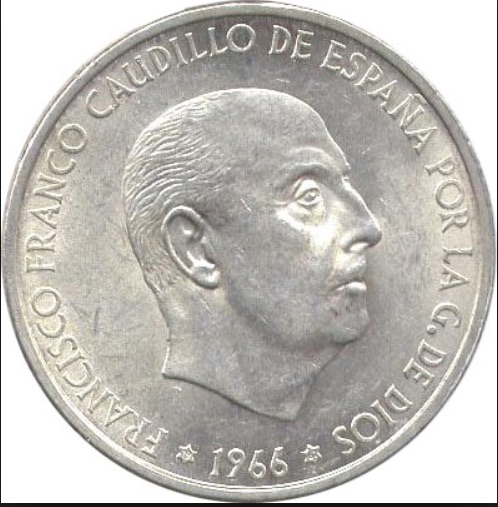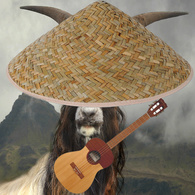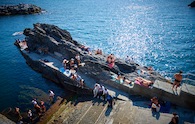Welcome to one of the most active flamenco sites on the Internet. Guests can read most posts but if you want to participate click here to register.
This site is dedicated to the memory of Paco de Lucía, Ron Mitchell, Guy Williams, Linda Elvira, Philip John Lee, Craig Eros, Ben Woods, David Serva and Tom Blackshear who went ahead of us.
We receive 12,200 visitors a month from 200 countries and 1.7 million page impressions a year. To advertise on this site please contact us.
|

|
|
Marchas de Procesión
|
You are logged in as Guest
|
|
Users viewing this topic: none
|
|
Login  | |
|

   
Richard Jernigan
Posts: 3430
Joined: Jan. 20 2004
From: Austin, Texas USA

|
 RE: Marchas de Procesión (in reply to mrstwinkle) RE: Marchas de Procesión (in reply to mrstwinkle)
|
|
|
quote:
ORIGINAL: mrstwinkle
quote:
Few if any Christian religious festivals beat Semana Santa in Seville for drill and ceremonies.
Interesting, even though I'm completely atheist. In the past I've avoided going there at Easter due to inflated hotel prices, but might have a change of plan for once.
The tone seems somehow oddly flamenco influenced to my ears - or perhaps I'm just imagining it. Or simply very Spanish.
I was raised an Episcopalian, the American branch of the Anglican Communion, but I have been consciously agnostic since the age of 18. I suppose I must have been dubious before that. Anglicans rank behind the Roman and Orthodox Churches in ceremony, but they can put on a show at times, for example Easter or Innocents' Day at Westminster Abbey, or Christmas at King's College Cambridge.
I find I can enjoy the emotional resonance of Semana Santa in Sevilla without requiring any mental gymnastics. As you can see from the video, it's not a time and place for anyone who has not a very high tolerance for extremely big and dense crowds--and inflated lodging prices.
Years ago a friend arranged for us to stay at the house of a Marqués during Seville's Feria, a couple of weeks after Easter. A few cases of good California wine was the room rent, and the price of admission to his caseta. Lots of sevillanas, but a little flamenco in places.
RNJ
|
|
|
|
REPORT THIS POST AS INAPPROPRIATE |
Date Oct. 14 2017 5:08:23
 |
|

   
BarkellWH
Posts: 3458
Joined: Jul. 12 2009
From: Washington, DC

|
 RE: Marchas de Procesión (in reply to Richard Jernigan) RE: Marchas de Procesión (in reply to Richard Jernigan)
|
|
|
quote:
Few if any Christian religious festivals beat Semana Santa in Seville for drill and ceremonies.
I would agree with you, but Semana Santa in the Philippines always adds an interesting touch. Early on in my Foreign Service career I was assigned to the American Embassy in Manila. Like most of Latin America and Spain, the Philippines closes down during Semana Santa. Penitentes with pointed hoods and the whole regalia parade through the streets of most towns and villages, and many scourge themselves with split bamboo whips.
And every year, as long as anyone can remember, someone in the town of San Fernando, a bit north of Manila, is actually crucified on a cross, with nails in the hands and feet. Historians have concluded that Roman crucifixions, including that of Christ, placed the nails through the wrist, as the palm of the hand would not withstand the weight, but the Filipino who is crucified in San Fernando is nailed through the palms and does not stay on the cross for long.
Bill
_____________________________
And the end of the fight is a tombstone white,
With the name of the late deceased,
And the epitaph drear, "A fool lies here,
Who tried to hustle the East."
--Rudyard Kipling
|
|
|
|
REPORT THIS POST AS INAPPROPRIATE |
Date Oct. 14 2017 16:46:16
 |
|

   
Richard Jernigan
Posts: 3430
Joined: Jan. 20 2004
From: Austin, Texas USA

|
 RE: Marchas de Procesión (in reply to Piwin) RE: Marchas de Procesión (in reply to Piwin)
|
|
|
quote:
ORIGINAL: Piwin
I remember reading somewhere that church attendance was plummeting in Andalucia while at the same time participation to Semana Santa was on the rise. Go figure.
When I first spent the summer in Mexico on my own at age 17, several people told me "Creo en Dios, pero no en los sacerdotes." ("I believe in God, but not in the priests.") Perhaps a similar trend is taking hold in Spain.
Both the Mexican Reforma of 1857 and the Revolution of 1910 were strongly anti-clerical. As far as I know, all Church buildings in Mexico are still the property of the federal government, and the government still has the power to determine how many priests officiate in the country. As recently as the 1970s it was prohibited to appear on the street dressed as a priest.
The change in Spain since the death of Franco has been far more peaceful, but as the country has become more western European in culture the support for the Church and its power have steeply declined.
Franco and the Church were closely aligned during Fascism. The "G." on coins stands for "gracia": "Francisco Franco, Caudillo of Spain, by the grace of God." This, no doubt, is a factor in the Church's loss of influence.
But as the Mexican experience indicates, loss of faith in the Church doesn't necessarily imply loss religious faith.

The first Spaniards I came to know lived in the primer cuadro of Mexico City, the original center of the city near the Zocalo, the main square. They had left Spain when Franco won the Civil War. They weren't communists or anarchists. They were doctors, lawyers, and small businessmen who had established themselves in Mexico.
Many of them ate at the restaurant of the Hotel El Salvador, a few blocks south of the Zocalo. The hotel was owned by Spaniards. Both "La Señora" who ran the dining room and most of her cuisine were Spanish. Others among our favorite places to eat was a large Basque restaurant on the third floor of a building on San Juan de Letran, owned by a cooperative society (the street is now the Eje Central Lazaro Cardenas), "El Meson del Castellano" in Calle Bolivar and "Cafe El Moro" for late night churros and chocolate.
Of course the Spaniards' attitudes toward Franco were what you would expect. The Mexican government never recognized the Fascists as the legitimate government of Spain.
When I first went to Spain in 1957 and saw the coins, I felt a chill.
RNJ
Images are resized automatically to a maximum width of 800px
 Attachment (1) Attachment (1)
|
|
|
|
REPORT THIS POST AS INAPPROPRIATE |
Date Oct. 15 2017 22:06:57
 |
|

   
BarkellWH
Posts: 3458
Joined: Jul. 12 2009
From: Washington, DC

|
 RE: Marchas de Procesión (in reply to Richard Jernigan) RE: Marchas de Procesión (in reply to Richard Jernigan)
|
|
|
quote:
Both the Mexican Reforma of 1857 and the Revolution of 1910 were strongly anti-clerical.
True as far as it goes, but the real official, legal, harsh anti-clerical stance of the Mexican government was encoded in the Constitution of 1917, which outlawed teaching by the Church, gave control over Church matters to the state, put all Church property at the disposal of the state, outlawed religious orders, outlawed foreign-born priests, gave states the power to limit or eliminate priests in their territory, deprived priests of the right to vote or hold office, and prohibited Catholic organizations which advocated public policy. The Constitution of 1917 effectively outlawed the Catholic church. Another contributing factor was the support the traditionalists (including the Catholic Church) gave Maximillion as the French emperor before his overthrow.
Bill
_____________________________
And the end of the fight is a tombstone white,
With the name of the late deceased,
And the epitaph drear, "A fool lies here,
Who tried to hustle the East."
--Rudyard Kipling
|
|
|
|
REPORT THIS POST AS INAPPROPRIATE |
Date Oct. 16 2017 1:57:55
 |
|

   
Richard Jernigan
Posts: 3430
Joined: Jan. 20 2004
From: Austin, Texas USA

|
 RE: Marchas de Procesión (in reply to BarkellWH) RE: Marchas de Procesión (in reply to BarkellWH)
|
|
|
quote:
ORIGINAL: BarkellWH
True as far as it goes, but the real official, legal, harsh anti-clerical stance of the Mexican government was encoded in the Constitution of 1917....<snip>
Bill
Also true as far as it goes.
On that trip in 1955 I encountered hand painted signs in the Bajio and Michoacan on walls and doorposts, "Viva Cristo Rey":"Long live Christ the King." Some people I asked about the signs just changed the subject, others cautioned me not to bring up such questions, and a handful of people told me parts of the story.
The anticlerical provisions of the 1917 Constitution were not enforced until the Presidency of Plutarco Elias Calles, who passed laws to implement them, and to suppress religious fiestas. In 1926 the local guerilla resistance to the Calles laws coalesced into widespread rebelion in central and western Mexico, supported by the Church. The Mexican Army, largely loyal to the government, moved to put down the revolt. Widespread armed conflict persisted until 1929, when peace was established, partly brokered by the U.S. Ambasador. The government of Emilio Portes Gil allowed the Church to go back into business, under strict supervision. Anticlerical laws remained on the books until 1992.
This Wikipedia article mainly agrees with what I have read or heard:
https://en.m.wikipedia.org/wiki/Cristero_War
RNJ
|
|
|
|
REPORT THIS POST AS INAPPROPRIATE |
Date Oct. 16 2017 2:39:43
 |
|

   
BarkellWH
Posts: 3458
Joined: Jul. 12 2009
From: Washington, DC

|
 RE: Marchas de Procesión (in reply to Richard Jernigan) RE: Marchas de Procesión (in reply to Richard Jernigan)
|
|
|
The anti-clerical provisions of the 1917 Constitution were important because they lent a chapeau of Constitutional legitimacy to all of the extremely harsh measures the Mexican government subsequently took against both the Church as an institution and the clergy as individuals. Mexico's anti-clerical position was much harsher than many people think, and more so than the anodyne term "anti-clerical" suggests. I highly recommend one of my favorite authors, Graham Greene, who wrote two books on the extreme measures taken by the Mexican government against the church: "The Lawless Roads" and "The Power and the Glory."
"The Lawless Roads" (published in 1939) is a travel account by Graham Greene, based on his 1938 trip to Mexico, to see the effects of the government's campaign of forced anti-Catholic secularisation and how the inhabitants had reacted to the brutal anticlerical purges of President Plutarco Elías Calles. It is a vivid first-hand account of just how brutal the campaign was. "The Power and the Glory" is a novel based on what Greene saw and experienced on that trip. It is a the story of a Catholic priest being hunted down by government forces. Both books are very good and Greene's writing is superb.
My mother and her sister spent the first 16 years of their lives in Mexico, as my grandfather was manager of the Union Pacific Railroad in Northern Mexico. They all moved up to the U.S. after the Mexican government nationalized the railroads, the oil industry, and other foreign-owned elements in the 1930s. Bought what was the old Mexican consulate in Nogales, Arizona, and renovated it into a very nice residence. My father was in the Pacific for three years during World War II, and my mother and I lived in that house in Nogales until my father returned from the war when we moved up to Phoenix.
My grandmother, mother, and aunt had many interesting stories to tell about the campaign against the Church, which they, of course witnessed first-hand while living in Mexico. Also, many stories of revolutionary activity in Mexico. I still have my grandfather's photographs taken during the Mexican Revolution from 1910 on. There are interesting photographs of trains with armed troops in armored cars in front of the locomotive and at the rear of the train. And several photos of rebels from one side or the other who were hanged from telegraph poles and left there as a warning to others. We also have a "Certificado de Salvaconducto" signed and issued to my grandfather by Venustiano Carranza, which allowed my grandfather to pass unhindered within territory under Carranza's control. Very interesting and exciting times, those. But brutal for the Catholic church.
Bill
_____________________________
And the end of the fight is a tombstone white,
With the name of the late deceased,
And the epitaph drear, "A fool lies here,
Who tried to hustle the East."
--Rudyard Kipling
|
|
|
|
REPORT THIS POST AS INAPPROPRIATE |
Date Oct. 16 2017 13:56:42
 |
|

   
Richard Jernigan
Posts: 3430
Joined: Jan. 20 2004
From: Austin, Texas USA

|
 RE: Marchas de Procesión (in reply to BarkellWH) RE: Marchas de Procesión (in reply to BarkellWH)
|
|
|
Of the books Bill recommends I have only read "The Power and the Glory," which I recommend as well. It is consonant with stories I have heard from the period.
Mexico, for all its brilliance in style, culture and art, has often been a brutal place. Though Benito Juarez, the principal leader of the Reforma of 1857, was a poor Indian boy from the hills around Oaxaca, nurtured and educated at age 12 by a kind hearted priest in the city, Juarez and the Reforma were against the Church for a number of reasons.
The Church was largely aligned with the Conservative political faction, who opposed the Reforma. The Reformists suspected the Church of lending financial support to the Army, whose power the Reforma intended to reduce. But perhaps the weightiest reason was that the Church was among the largest landowners in the country, perhaps the very largest.
The concentration of land ownership in the hands of a small group of wealthy landowners and the Church condemned landless peasants to poverty and oppression. The Church was the leading institution responsible for this oppression. Much, if not most Church land was administered by wealthy secular leaseholders. The Church hierarchy played only an indirect role, but it was Church land ownership which enabled the abuses.
The "Ley Juarez" law removed many privileges of the clergy. Priests had been under the exclusive jurisdiction of church courts. The Ley Juarez subordinated church courts to civil law.
The "Ley Lerdo" forbade land ownership by corporate entities. It dictated that such land be sold to its occupants on easy terms. If the owners did not voluntarily sell, the land was put up for public auction.
This law had two serious defects. It left large amounts of land in the hands of wealthy individuals, and it deprived native communities of the communal lands they had held since before the Spanish conquest. But the Ley Lerdo eventually led to the confiscation of Church lands, which touched off a war between the Liberal Reformists and the Conservatives.
The Reformist land policy was a failure. Just before the Porfirio Diaz presidency ended, near the beginning of the 1910 Revolution, 97% of Mexican land was held by 1% of the population. The land reform provisions of the 1917 Constitution were never fully implemented, and have essentially been abandoned.
The 1926 Calles administration may have been a brutal time for the Church, but the preceding 1910-1920 Revolution killed a fifth of the population in armed combat, famine and epidemics.
My family connection to those days is not nearly as close as Bill's. I only heard first hand accounts by relatives from those who have raised coffee near Jalapa since the 1870s. They supported Venustiano Carranza and Álvaro Obregon.
RNJ
|
|
|
|
REPORT THIS POST AS INAPPROPRIATE |
Date Oct. 16 2017 22:45:28
 |
|
 New Messages New Messages |
 No New Messages No New Messages |
 Hot Topic w/ New Messages Hot Topic w/ New Messages |
 Hot Topic w/o New Messages Hot Topic w/o New Messages |
 Locked w/ New Messages Locked w/ New Messages |
 Locked w/o New Messages Locked w/o New Messages |
|
 Post New Thread
Post New Thread
 Reply to Message
Reply to Message
 Post New Poll
Post New Poll
 Submit Vote
Submit Vote
 Delete My Own Post
Delete My Own Post
 Delete My Own Thread
Delete My Own Thread
 Rate Posts
Rate Posts
|
|
|
Forum Software powered by ASP Playground Advanced Edition 2.0.5
Copyright © 2000 - 2003 ASPPlayground.NET |
0.078125 secs.
|


 Printable Version
Printable Version











 New Messages
New Messages No New Messages
No New Messages Hot Topic w/ New Messages
Hot Topic w/ New Messages Hot Topic w/o New Messages
Hot Topic w/o New Messages Locked w/ New Messages
Locked w/ New Messages Locked w/o New Messages
Locked w/o New Messages Post New Thread
Post New Thread